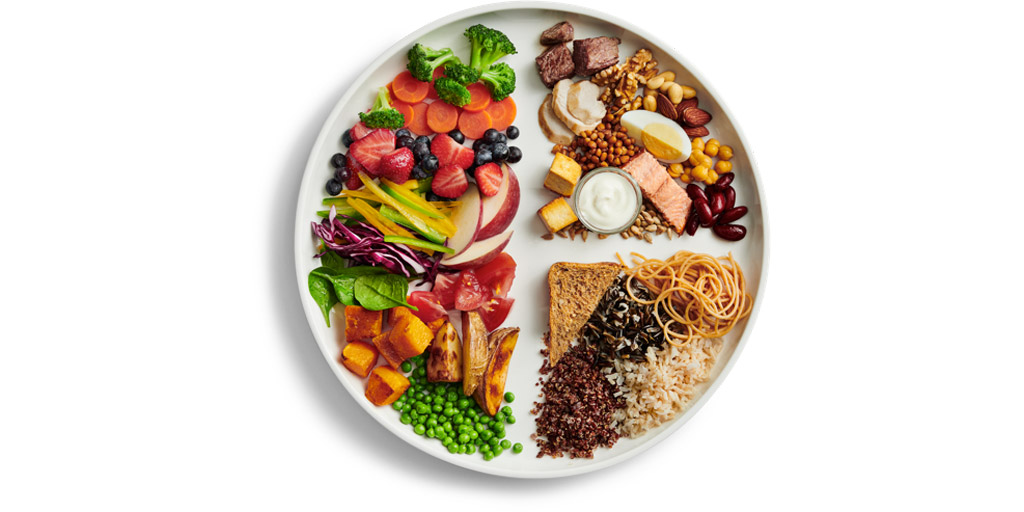Canada's Food Guide part 2
 CREDIT: HEALTH CANADA (CANADA.CA)
CREDIT: HEALTH CANADA (CANADA.CA)A few weeks back, at the beginning of Nutrition Month, I reviewed the first page of the new (January 2019) Canada’s Food Guide.
Many governments around the world have a set of healthy eating guidelines that put together by a group of experts in the health & wellness industry, including registered dietitians, medical professionals, scientists and more.
These experts also reached out and asked for the opinions of their colleagues and other health & wellness professionals such as nurses, professors, fitness trainers and more.
The questions in the opinion survey were not to change the fact as to what is healthy or not but to learn about trends, clients / patient struggles with the old guide and following other guides or diet plans. It’s important to remember that the guide is not a diet plan as it does not tell you what to eat specifically eat day, it suggests the types of foods and portions for the general population.
If you go to the food guide website, food-guide.canada.ca, the first page gives us a picture of a plate with a few tips, which I hopefully broke down for you in Part 1. At the bottom of the plate there are numbers one and two. Click on two and you will see a series of pictures with some more great tips. You can click on each one and it will open a new page will a long list of details of what each of these tips mean.
Again, I’d like to break each tips down more simply for you:
1. Be Mindful of your eating habits: What does mindful mean? It means awareness and connection to the present moment. It also means to take a moment or more to stop and make a decision about what is happening. It doesn’t matter what the decision is. What matters is if you are prepared to accept the decision and the consequences that it bares. I know this may sound deep and like something only hipsters do, but trust me, the more you practice a moment at a time of mindfulness, especially when it come to your eating habits, the more you will realize that this is a major key to your success in many things in life: stress, sleeping, better grades, positive work outcomes, relationships, effective workouts and more.
2. Cook More often: This might not be a great idea if you are a terrible cook. There’s good news for you. YouTube and Pinterest are chock full of easy healthy recipes and simple meal prep hacks. You can also take courses at the Superstore or maybe even here at Fanshawe. If cooking is just not your thing or you seriously don’t have a great kitchen or time, then a service like Hello Fresh or LiveFit Foods might be the way to go. The whole point of this tip is to get you to stop buying packaged foods, fast food or things you think are food but really are no more nutritious than chewing paper. Choose whole foods most often, very little processed, and dishes that are filled with colourful fruits and vegetables,
3. Enjoy your food: My mom always used to say, “Look at your food, smell it, then take 10 to 20 chews before swallowing”. If you can’t take the time to enjoy and really taste your food then were is the satisfaction in that? Especially if you are re-fuelling after a tough workout. I know you’re hungry, but scarfing something down will just cause bloating and gas. If you find it hard to enjoy healthy foods, then try cooking / preparing them in different ways, pairing them with something you do like, or adding seasonings / herbs / spices.
4. Eat meals with others: Rule #1 in our house is that when we eat together, no phones or T.V. on. We go around the table and ask, “How was your day?” giving each person a chance to talk and others to listen while they eat or engage in conversation. We notice that we all eat far less because we eat slowly and get full faster. Sometimes we have conversations about the food we are eating. If you live alone or prefer to be alone when you eat, there is nothing wrong with that. If I’m alone, this is when I do answer emails, Facebook / IG messages and if the person is available on the other end to respond then it works the same way as having them there in person.
The online guide also has some great recipes, tips and resources to check out. This guide has come along way since it’s inception in 1942 and has had a major overhaul since the last on published in 2006. Is it perfect? I do think there could be a few more tweaks but this will definitely be one of my go to resources to use for the majority of my clients, especially those that really struggle with understanding what healthy eating really means. No matter what your opinions or beliefs are, everyone can find something they will like about the guide.
Karen Nixon-Carroll is the Program Manager at Fanshawe’s Fitness Centre.














